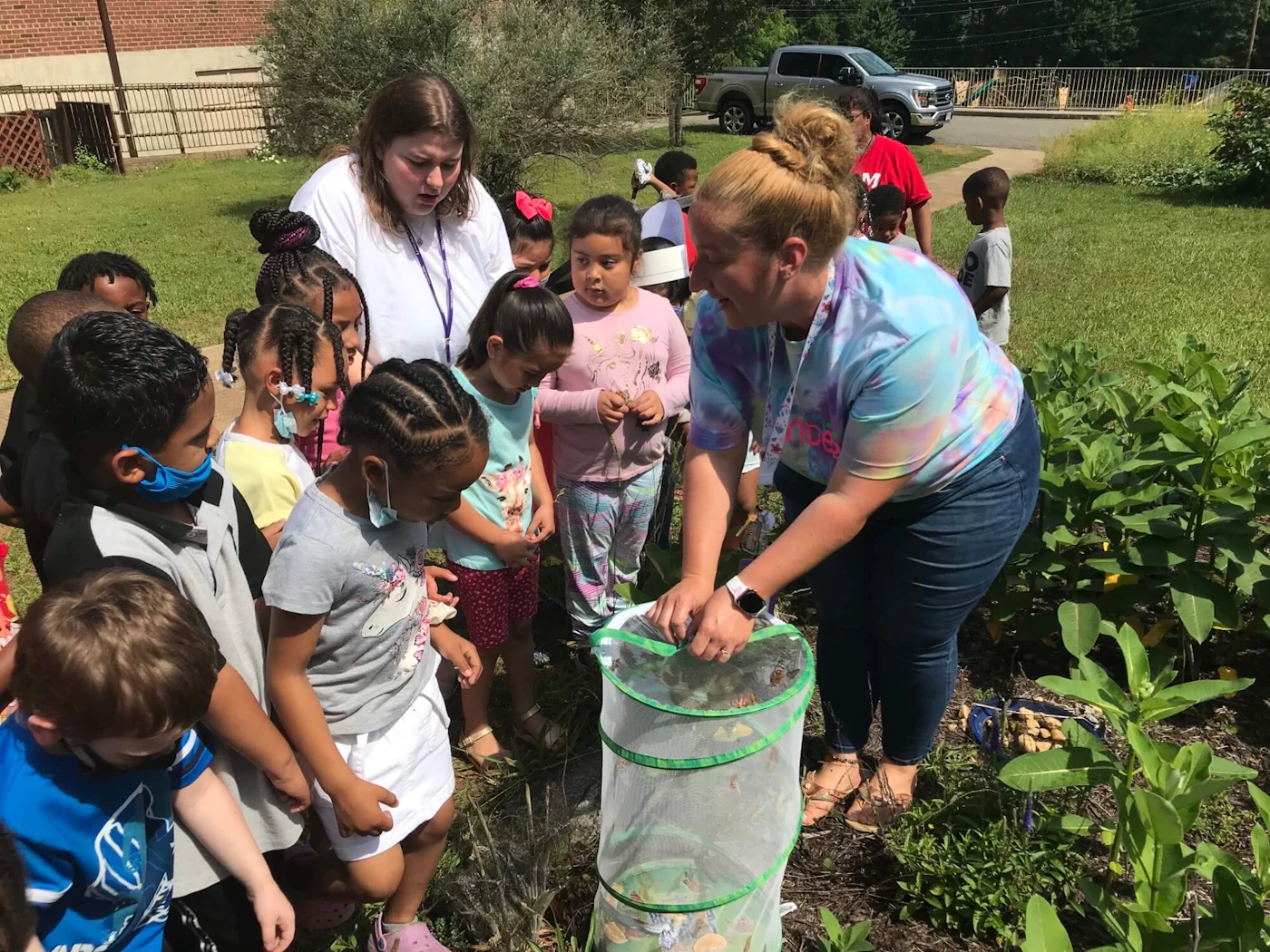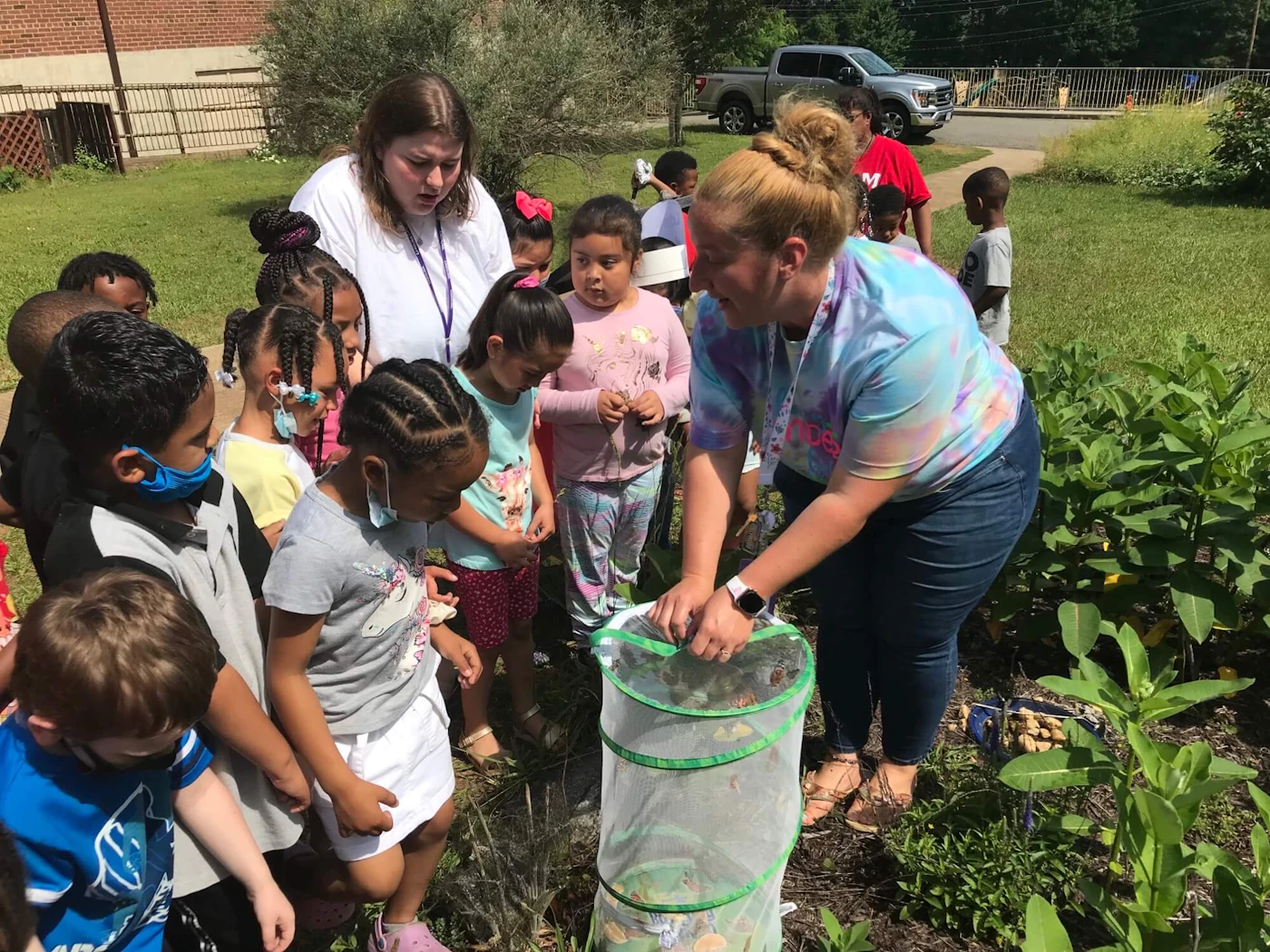
STEM teacher Laurie Witt and Krista Hodges, educational manager of the Dan River Basin Association, led students at the Albert Harris Elementary School (AHES), part of the Martinsville City Public Schools (MCPS) division, in a hands-on project to create a pollinator and vegetable garden at the school.
The students chose plants that specifically attracted butterflies, bees, birds, and earthworms. “We planted colorful flowers because bees are attracted to bright colors,” one of the students said. They also planted milkweed so the caterpillars could eat the leaves. Some planting considerations were to plant perennials, because they don’t need to be replanted every year.
Students also considered making wise choices about watering the plants. In order to avoid using water from the faucet, students used problem-based learning to develop a rain barrel system, based on their observations that the school had a very wet area near a downspout. The rain barrel catches not only rain, but water from the cooling system on the roof of the school. They used the water collected in the barrel to water plants. The rain barrels also allowed them to direct the water to plants that need it, instead of letting it run into the storm drain.
As mentioned above, in addition to a pollinator garden, students planted a vegetable tasting garden where they grew things like tomatoes, squash, cucumbers, and radishes. Students were involved in each phase of the project, including planting seeds, pulling weeds, watering plants, and harvesting crops.
Students used the fruits of their labor to make a salad and used a recipe to make dressing for the salad, by integrating reading, math and science as they were measuring ingredients and applying their knowledge of mixtures and solutions.
On top of having fun throughout the entire process, the project also taught students multiple key concepts that they needed to know for the Virginia Science Standards of Learning (SOL) and the Virginia Math SOL. Their teacher explained that by being involved in a real-life learning environment, the lessons came alive for students—and they were able to tap into what they learned in the test.
